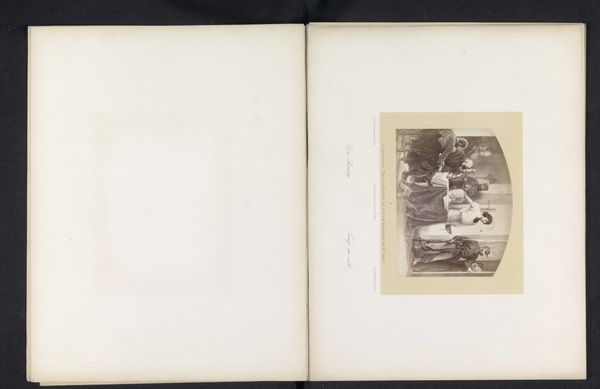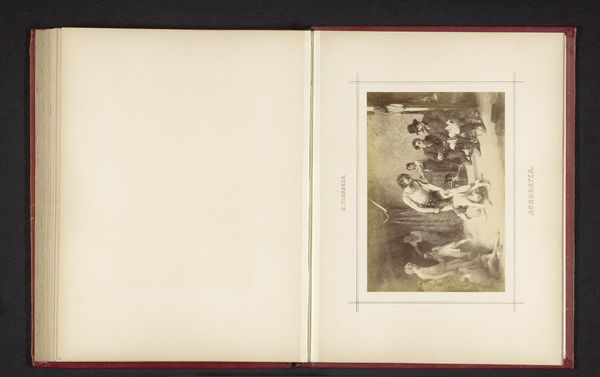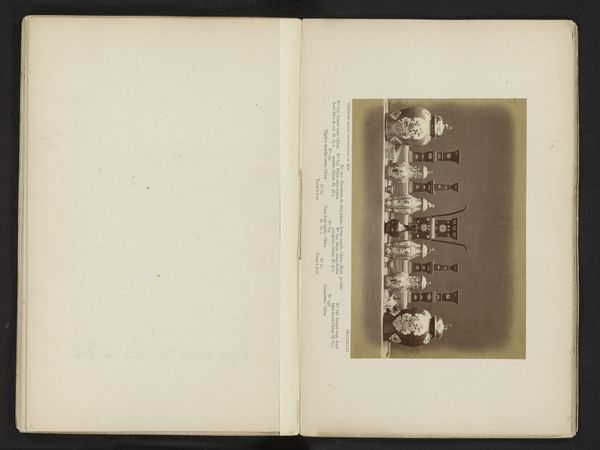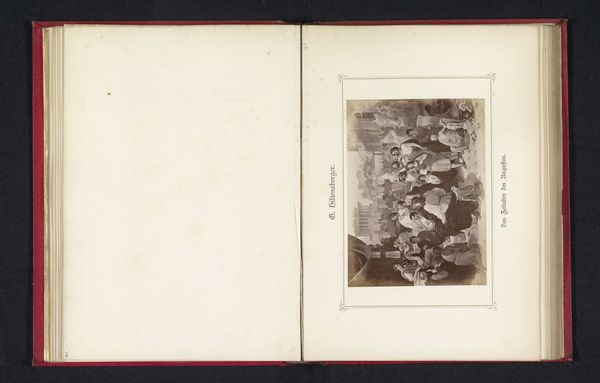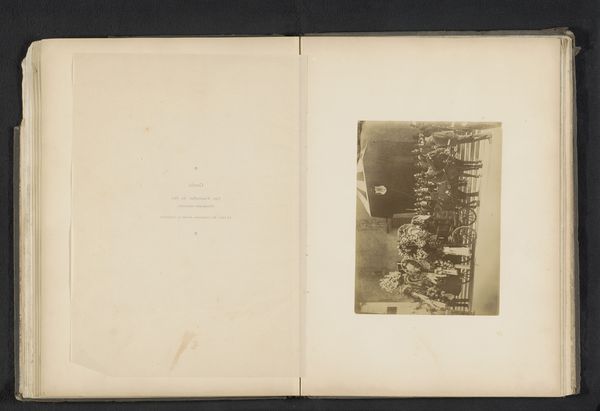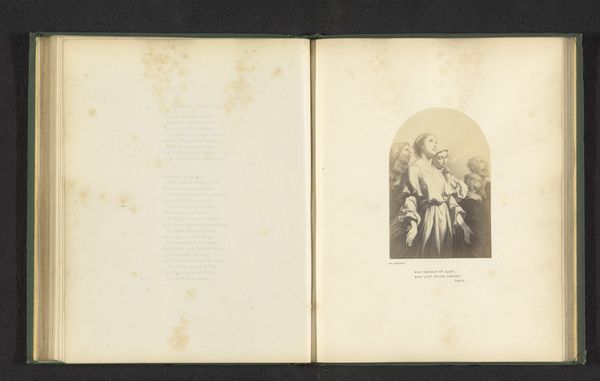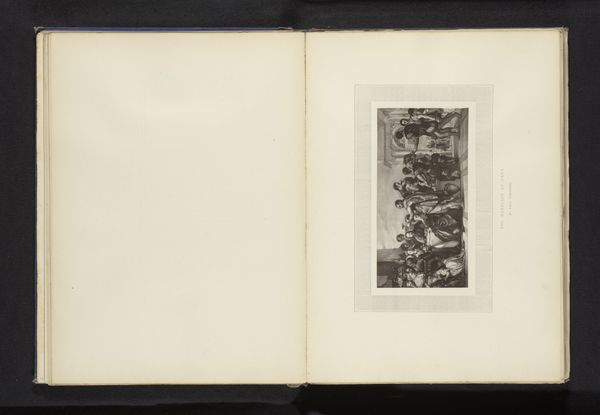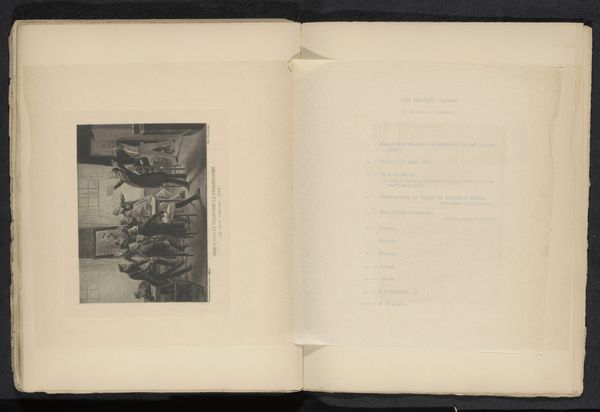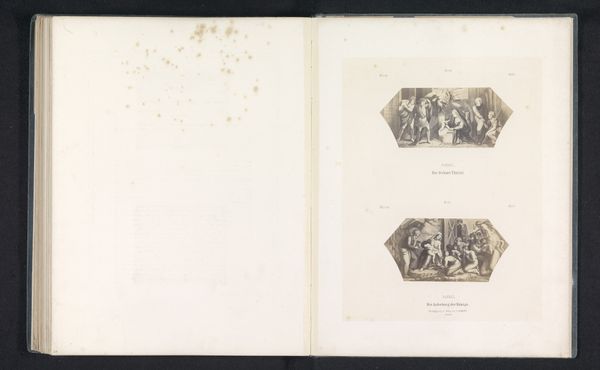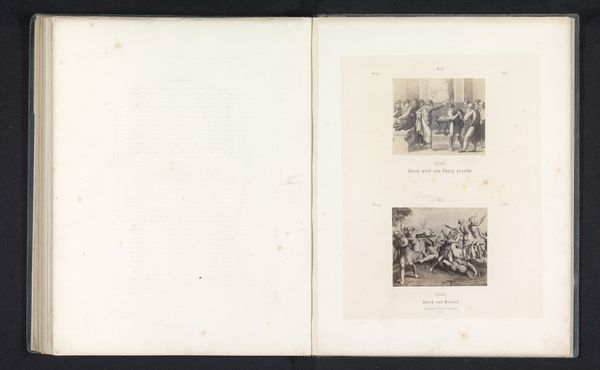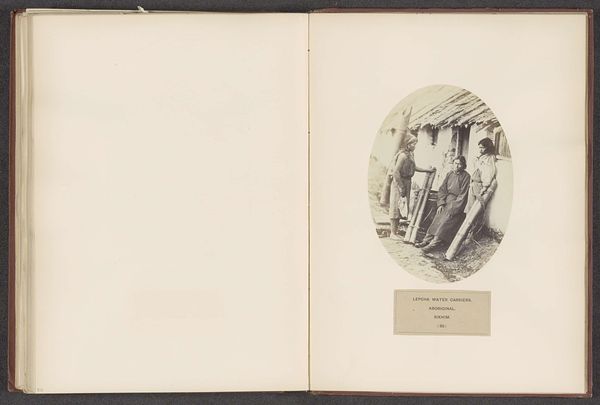
Fotoreproductie van een tekening van vermoedelijk een verrader die wordt vastgehouden door twee mannen en drie soldaten die een brief lezen before 1868
0:00
0:00
print, photography, albumen-print
#
portrait
#
aged paper
#
homemade paper
#
script typography
#
narrative-art
#
paperlike
# print
#
sketch book
#
hand drawn type
#
photography
#
personal sketchbook
#
hand-drawn typeface
#
thick font
#
genre-painting
#
history-painting
#
delicate typography
#
academic-art
#
albumen-print
#
realism
Dimensions: height 115 mm, width 149 mm
Copyright: Rijks Museum: Open Domain
Editor: This is an albumen print from before 1868, attributed to Ludwig Angerer. It’s a photograph of a drawing, depicting what appears to be the capture of a traitor. It's quite a dramatic scene; a man is being held by soldiers while another reads what I presume is evidence against him. What strikes you when you look at this piece? Curator: The drama certainly jumps out, but let's think about how Angerer, or rather, the original artist, uses this image to convey a specific narrative within a broader political context. Notice the performative nature of justice: the soldiers reading the document publicly, the captive displayed. What social function did images like this serve in mid-19th century Europe? Editor: Hmm, propaganda, maybe? To solidify power or justify actions? Curator: Exactly. And consider who this image was meant to reach. Was it meant to intimidate, to reassure, or perhaps even to provide a moral lesson about loyalty and betrayal? It's also important to note the medium itself - photography reproducing a drawing. This highlights the changing ways stories could be disseminated and consumed. Who had access to photographs versus the original drawing, and how might this influence the artwork’s reception? Editor: That’s a good point. Photography made it much more accessible to a wider audience, potentially amplifying its impact. But why a drawing, and not an original photograph? Curator: Perhaps the drawing allowed for a level of dramatization or staging that was harder to achieve with early photography. Or maybe it was a way to lend the image an air of historical authenticity. How does the combination of media impact the overall message for you? Editor: It feels more staged, in a way, less like a spontaneous record and more like a constructed narrative. Thanks for helping me to think about that cultural layer. Curator: Of course! And by recognizing the image as part of a broader media and political landscape, we can engage with it critically rather than simply as a depiction of historical events.
Comments
No comments
Be the first to comment and join the conversation on the ultimate creative platform.
